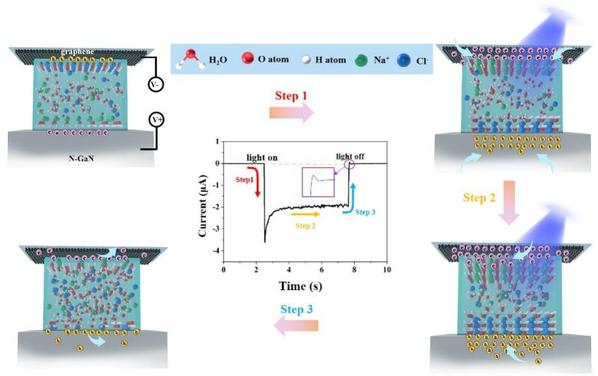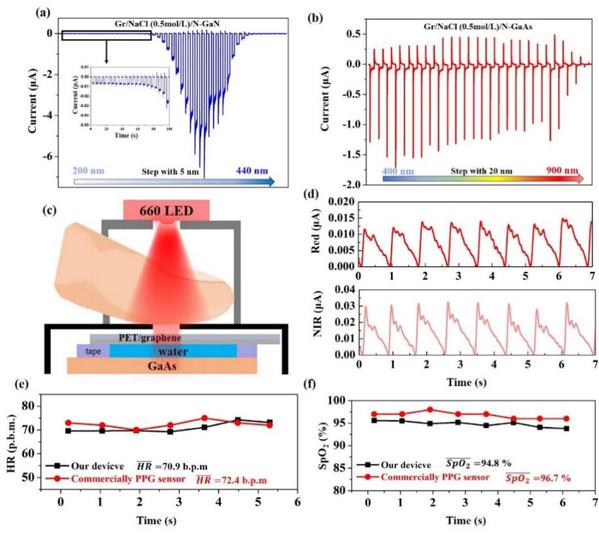Liquid-triggered graphene photodetectors as a stepping stone for revolutionizing healthcare monitoring
In the rapidly evolving landscape of smart healthcare, the shift towards digitalization gains momentum, and a promising frontier emerges with the advent of the new generation of photodetectors. Among these advancements, graphene material stands out as a beacon of hope, showcasing remarkable properties such as large carrier mobility, exceptional optical transparency, and robust mechanical strength. These attributes position graphene at the forefront of photodetector research, shaping the trajectory of the field.
Traditionally, photodetectors have predominantly relied on solid semiconductors, rarely venturing into the realm of liquid-based sensing units. Moreover, the production of conventional heterogeneous or homogeneous PN junction photodetectors has remained a costly and complex endeavor. The utilization of sophisticated vacuum epitaxial equipment, including metal-organic chemical vapor deposition (MOCVD) and molecular beam epitaxy (MBE), has been a prerequisite, accompanied by the intricate challenge of the lattice matching of the semiconductor PN junction. This limitation not only narrows the spectrum of semiconductors available for probing different light sources but also mandates the application of applied bias voltage to collect photo-excited carriers, thus adding extra costs and energy consumption in terms of driver circuitry.
In a groundbreaking move to address this challenge, the team led by Prof. LIN Shisheng from the Zhejiang University College of Information Science and Electronic Engineering has introduced a pioneering polarized liquid-triggered graphene-based photodetector. Their findings are detailed in an article titled “Self-Driven Photo-Polarized Water Molecule-Triggered Graphene-Based Photodetector”, published in the esteem journal Research.

Fig. 1. The physical mechanism of the polarized molecule-triggered photodetector.
The innovation hinges on the interaction between polar liquid chemical potential and the semiconductor Fermi level. Upon contact with N-type semiconductor and graphene interfaces, the polar liquid becomes polarized, inducing charge at the solid-liquid two-phase interface. Illumination prompts there to be a mass of holes and electrons in the semiconductor. These photogenerated electrons and holes continually migrate to the opposite sides of the polar liquid. With continuous irradiation from an external light source, more polar liquid molecules are polarized by the new photogenerated carriers gathered on both sides. In this way, water molecules rotate in an orderly manner, and a stable photo-polarized current is generated. The addition of ionic solutions amplifies this current, opening doors to enhanced functionality.
Prof. LIN Shisheng and his team have effectively harnessed the ductility and conductivity of graphene to develop a novel liquid-based photodetector capable of stable, precise and non-intrusive photodetection and health monitoring. This breakthrough paves the way for transcending the confines of lattice matching in heterojunction semiconductor photodetectors by freely selecting a proper semiconductor in combination with a polar liquid according to the desired wavelength. The researchers have achieved successful integration of GaAs with broadband absorption into a device for efficient photoelectric conversion measurement. This advancement empowers the detection of visible and near-infrared wavelengths.

Fig. 2. Visible and NIR photodetector fabrication and PPG testing.
The study has yielded notable outcomes, as AC and DC components have been successfully extracted from the photoelectric volumetric pulse wave. The AC component is mainly derived from light absorption by the detector through the blood flowing through the arteries, serving as a direct reflection of changes in vessel diameter. Leveraging polar molecular liquid polarization photodetectors, the team has accomplished stable noninvasive human oximetry monitoring, with heart rate and oxygen blood saturation obtained at 69.7-74.2 beats per minute and 93.8-95.6%, respectively, closely paralleling those obtained by commercial oximeters.
This work, which integrates polar liquids into heterojunctions, charts a new direction for mixed-phase optoelectronic devices by optimizing polar liquid species and additives. The pioneering physical concept holds immense promise for future Internet of Things (IoT) applications, ushering in a new era of healthcare monitoring and ushering healthcare into a digital age.